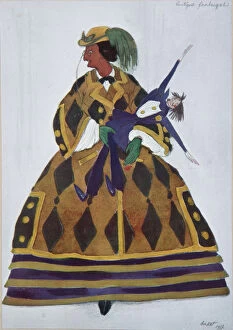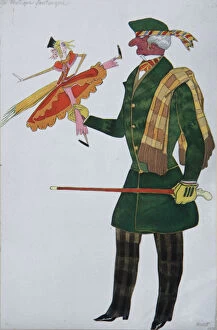Russian Art Critics Collection (#2)
Russian art critics have long been captivated by the enchanting world of ballet, a realm where creativity and elegance intertwine
For sale as Licensed Images
Choose your image, Select your licence and Download the media
Russian art critics have long been captivated by the enchanting world of ballet, a realm where creativity and elegance intertwine. From the graceful movements of ballerina Anna Pavlova to the mesmerizing stage designs of Leon Bakst, these critics have witnessed and celebrated some of the most iconic moments in Russian ballet history. In the early 1900s, Sir John Lavery's exquisite portrait of Anna Pavlova captured her ethereal beauty and talent. This image became an emblematic representation of Russian ballet's allure during that era. Leon Bakst, renowned for his innovative stage designs, left an indelible mark on the art form. His work for Claude Debussy's "The Afternoon of a Faun" transported audiences to a dreamlike world filled with mythical creatures and sensual movements. Similarly, his costume design for Igor Stravinsky's "The Firebird" brought to life a fantastical creature through vibrant colors and intricate details. Bakst continued to astonish with his costumes for other productions such as "Blue God" and "Scheherazade, " showcasing his ability to merge traditional elements with avant-garde aesthetics. His collaboration with Vaslav Nijinsky resulted in breathtaking performances like "Carnaval, " which showcased their artistic synergy on stage. Not only did these artists leave their mark on performances but also on printed materials associated with Ballets Russes. Leon Bakst's title page design for souvenir programs became iconic symbols representing this groundbreaking dance company. Other notable artists like Sergei Sudeykin contributed their talents by creating stunning costume designs for famous dancers like Anna Pavlova in "The Fairy Doll. " These creations added another layer of magic to already captivating performances. From Scarlatti's whimsical "The Good-Humoured Ladies" to La Boutique Fantasque’s imaginative costumes, Russian art critics reveled in every detail that made each production unique.







